QuillBot AI Detector Review: How Accurate Is It Really?

In today’s world, it’s getting harder to tell whether a piece of text was written by a human or AI. Tools like QuillBot claim to help spot AI-generated content, but how reliable are they really?
In this article, we’ll break down how QuillBot works, test its accuracy, explore its features, and see whether AI-assisted text can slip through detection. Whether you’re a student, writer, or just curious, this guide gives you the full picture.
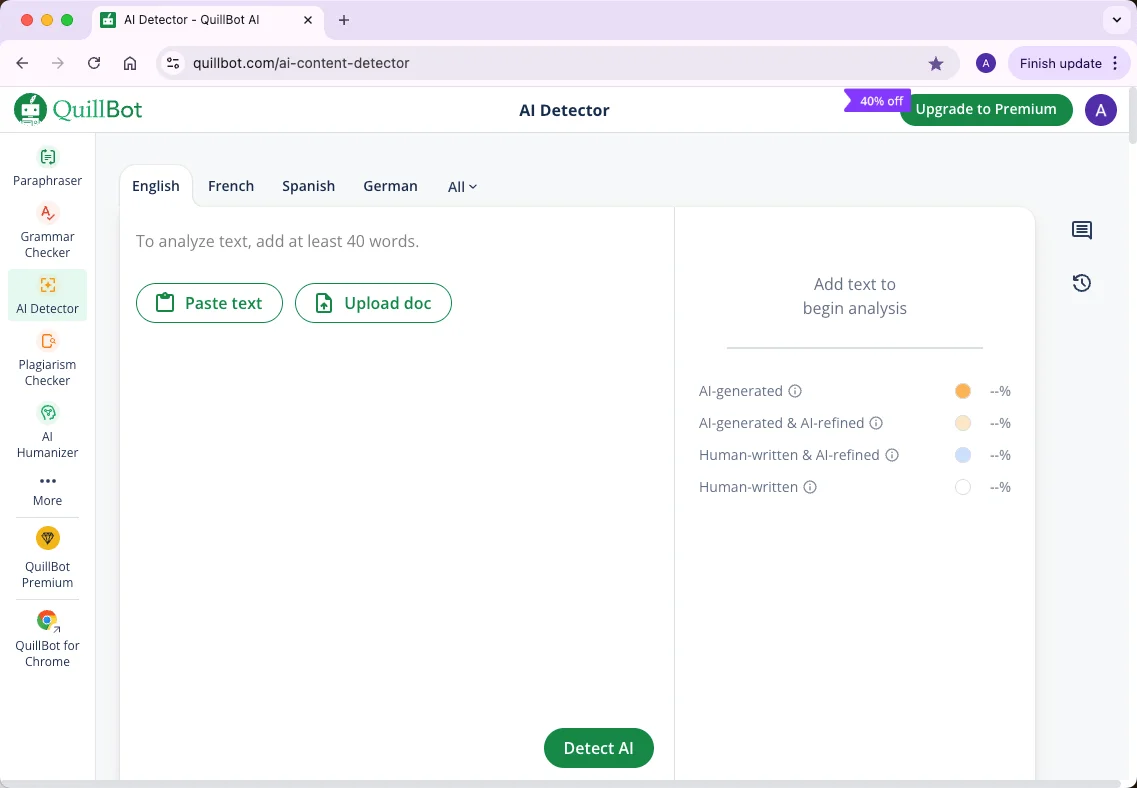
What is QuillBot?
QuillBot is a well-known writing assistant that helps with paraphrasing, grammar checks, summaries, and even plagiarism detection. It’s one of the most popular tools among students, researchers, and professionals because it makes writing faster and easier.
What is QuillBot AI Detector?
The QuillBot AI Detector is built to spot whether text was written by a person or generated by AI models like ChatGPT, GPT-4, Claude, Gemini, or LLaMA. What makes it stand out is that it doesn’t just catch obvious AI writing—it can also detect text that’s been rephrased (even with QuillBot itself), grammar-checked, or polished with other editing tools.
More and more established writing platforms are adding their own AI detectors. Another example you may know is the Grammarly AI Content Detector.
How Does It Work?
QuillBot’s AI Detector evaluates text based on linguistic and structural patterns. Instead of highlighting specific words, it looks at deeper signals such as:
Repetitive phrasing and generic sentence structures
Robotic or overly formal tone compared to natural human variation
Uniform sentence length instead of varied “burstiness”
Lack of originality or nuance in phrasing and ideas
It uses statistical metrics like perplexity (how predictable the text is) and burstiness (variation in sentence length and complexity) to estimate the probability of AI authorship. The final result is presented as a percentage score, showing how likely the text is AI-written.
📌 Important Note: When the detector is uncertain, it leans toward classifying content as human-written, helping reduce false positives. For best results, users should test the full text (not small snippets) and make sure the input meets the length requirement.
QuillBot’s Extra Tools
QuillBot isn’t just about AI detection—it’s part of a larger writing toolkit. Users also get access to:
Paraphraser – Rewrites text with different tones and fluency
Grammar checker – Fixes errors in grammar and style
Summarizer – Condenses long passages into key points
Citation generator – Creates references in MLA, APA, and other formats
Plagiarism checker – Detects copied content
Translator – Supports multiple languages for global users
How Accurate is QuillBot’s AI Detector?
QuillBot promotes its AI Detector as highly accurate, with detailed breakdowns that show whether text is AI-generated, AI-refined, or entirely human. According to the official statement, it can even flag sections polished with paraphrasers or grammar checkers, offering more depth than many competitors. But marketing claims are one thing—so we decided to test it ourselves.
We ran three different tests: one with pure AI-generated text, one with a hybrid of human-written and AI-extended writing, and one with AI text humanized by professional rewriting tools.
Test 1: Pure AI Text
Setup:
We generated a 500-word essay entirely using ChatGPT, with no human editing or rewriting. This represents the simplest case: text that is 100% AI-produced.
Results (QuillBot AI Detector):
AI-generated: 97%
Human-written: 3%
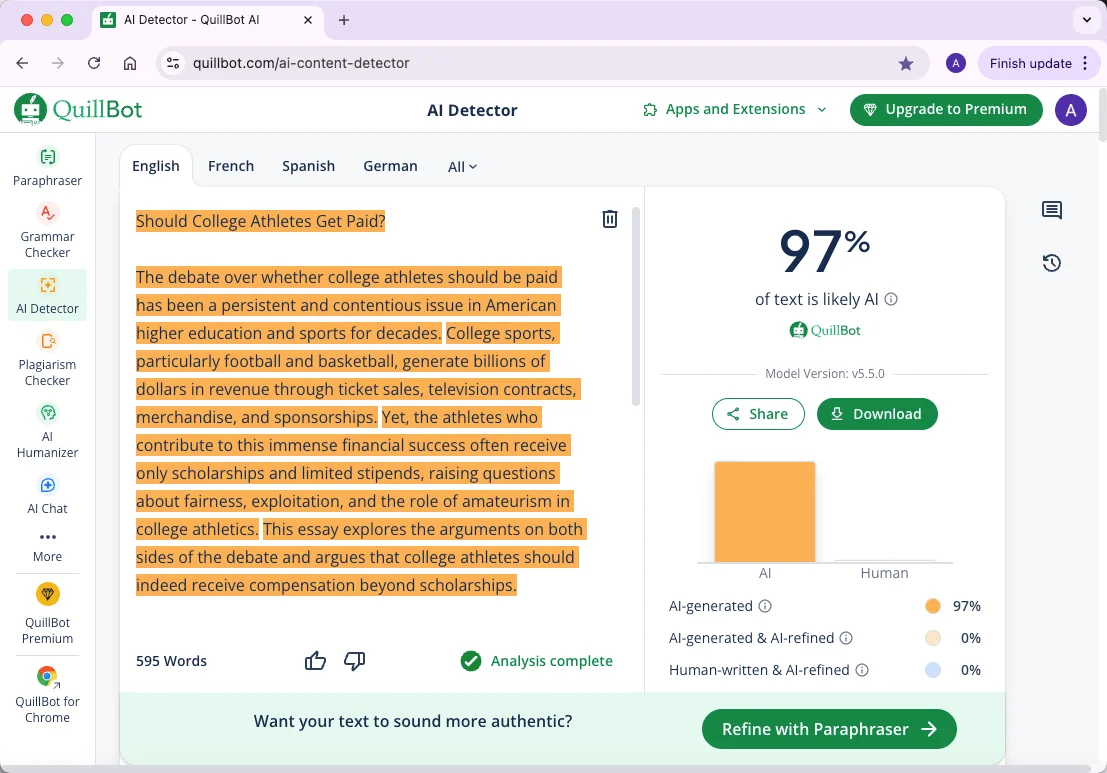
Observations:
The detector was almost perfectly accurate, clearly recognizing the content as AI-produced. The small “human-written” portion is within the margin of error.
Test 2: Mixed AI + Human Writing (Pre-ChatGPT Era)
Setup:
We took part in a research paper introduction written before AI tools became mainstream (human-written) and continued it using ChatGPT. The combined text was 454 words, with roughly 41% human-written and 59% AI-generated.
Results (QuillBot AI Detector):
AI-generated: 44%
Human-written & AI-refined: 6%
Human-written: 50%
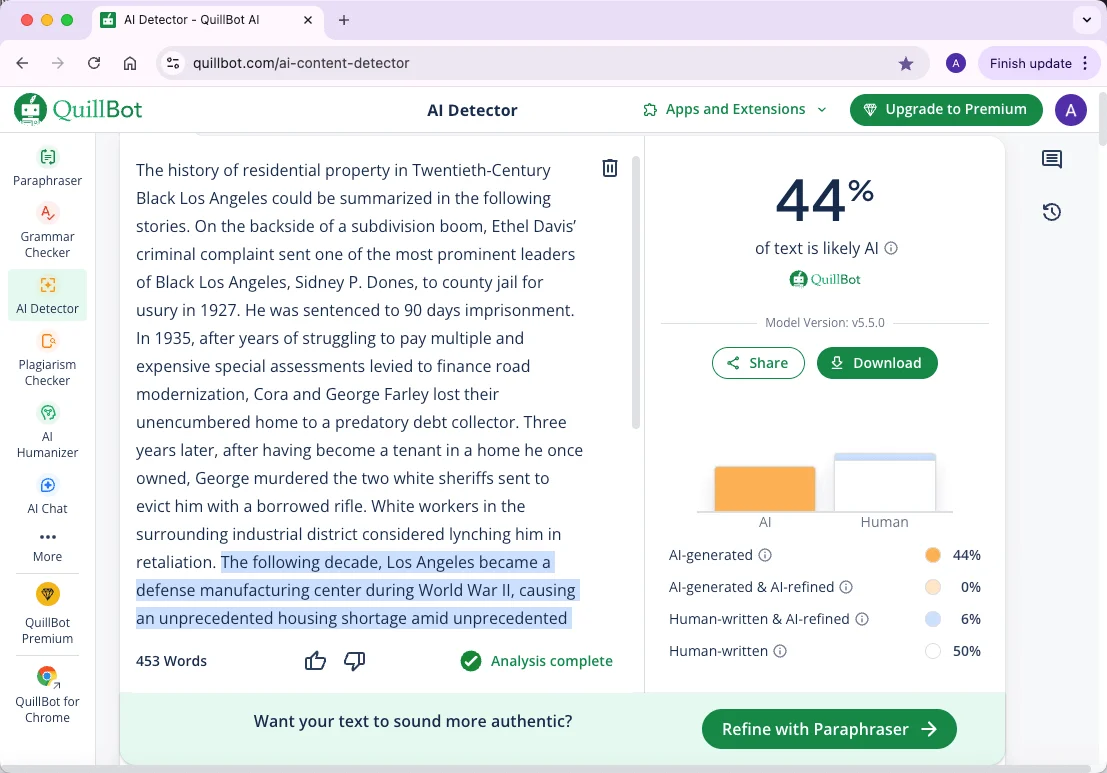
Observations:
The detector picked up the mix fairly well, though it slightly underreported the AI portion. Interestingly, it also flagged a section as “human-written & AI-refined,” showing it tries to categorize more than just AI vs. human.
Test 3: Humanized AI Text
Setup:
We took the 100% AI-written text in the test 1 and ran it through QuillBot's AI humanizer. The result was grammatically polished, stylistically varied, and intended to mimic natural human writing.
Results (QuillBot AI Detector):
AI-generated & AI-refined: 81%
Human-written: 19%

Observations:
Despite the heavy rewriting, QuillBot still flagged most of the text as AI-related. This suggests its detection relies on structural patterns rather than just word choice, making it harder to fool with surface-level edits.
👉 Overall, QuillBot’s detector was consistent in identifying AI-heavy content and provided more granular feedback than most detectors. That said, it wasn’t perfect—especially in hybrid cases—but it did a reasonable job of breaking down mixed authorship.
Pros and Cons of QuillBot AI Detector
Like any AI detection tool, QuillBot’s detector has its strengths and weaknesses. Here’s a balanced look:
✅ Pros
Simple to Use: The interface is straightforward. You can paste text or upload documents without needing technical know-how.
No Sign-Up Needed: You don’t need an account to try it, which is convenient for quick checks.
Clear Results: It gives you a percentage breakdown of AI vs. human writing, making results easy to interpret at a glance.
Extra Features: Since QuillBot is more than just a detector, you also get access to tools like a paraphraser, grammar checker, and citation generator if you use the broader platform.
❌ Cons
False Positives: Some users report that their human-written text is incorrectly flagged as AI-generated.
Misleading Results: The same text sometimes produces very different scores in repeat tests, which raises consistency issues.
No Pay-As-You-Go: QuillBot locks detection behind subscriptions, with no flexible one-time payment options.
Customer Service Complaints: Reports of slow or unhelpful responses when canceling or requesting refunds.
Limited Transparency: While you get a percentage, it doesn’t always show exactly which parts of the text are flagged, unlike some competitors.
QuillBot Pricing
QuillBot offers both a free tier and paid plans.
Free Plan
AI Detector: Check up to 1,200 words per scan
Paraphraser: Up to 125 words at a time
2 paraphrasing modes
Basic grammar correction
Humanizer (Basic mode only)
Basic summaries
Limited access to AI Detector
Good for light users who only need occasional checks and simple rewriting.

Premium Plan
$5/month (billed annually)
Includes everything in the Free plan, plus:
Unlimited paraphrasing (no word cap)
All paraphrasing modes
Advanced grammar recommendations
Humanizer (Advanced mode)
Custom summaries
Unlimited AI detection
Plagiarism prevention tools
Extra features for professional/academic writing
Best for students, researchers, or regular users who need more power and flexibility.
Team Plan
QuillBot also offers team subscriptions, designed for schools, businesses, or organizations. These plans provide collaborative tools, multi-seat licenses, and centralized billing.
Can You Bypass QuillBot AI Detector?
Bypassing AI detectors like QuillBot’s is a common question. The reason is simple: no detector is perfect, and sometimes even human-written text gets flagged as AI. At the same time, many writers want to know if AI-assisted content can be made to look more “human” to avoid detection.
The short answer is that basic tricks—like swapping words for synonyms or lightly paraphrasing—rarely work. QuillBot’s AI detector doesn’t just scan vocabulary; it looks at sentence rhythm, structural consistency, and predictability. That’s why shallow edits still get caught, as we saw in Test 3 above.
This is where professional humanization tools come in. Services like EssayDone go deeper than word-level tweaks. They restructure sentences, vary rhythm, and add stylistic nuance to better reflect natural human writing.
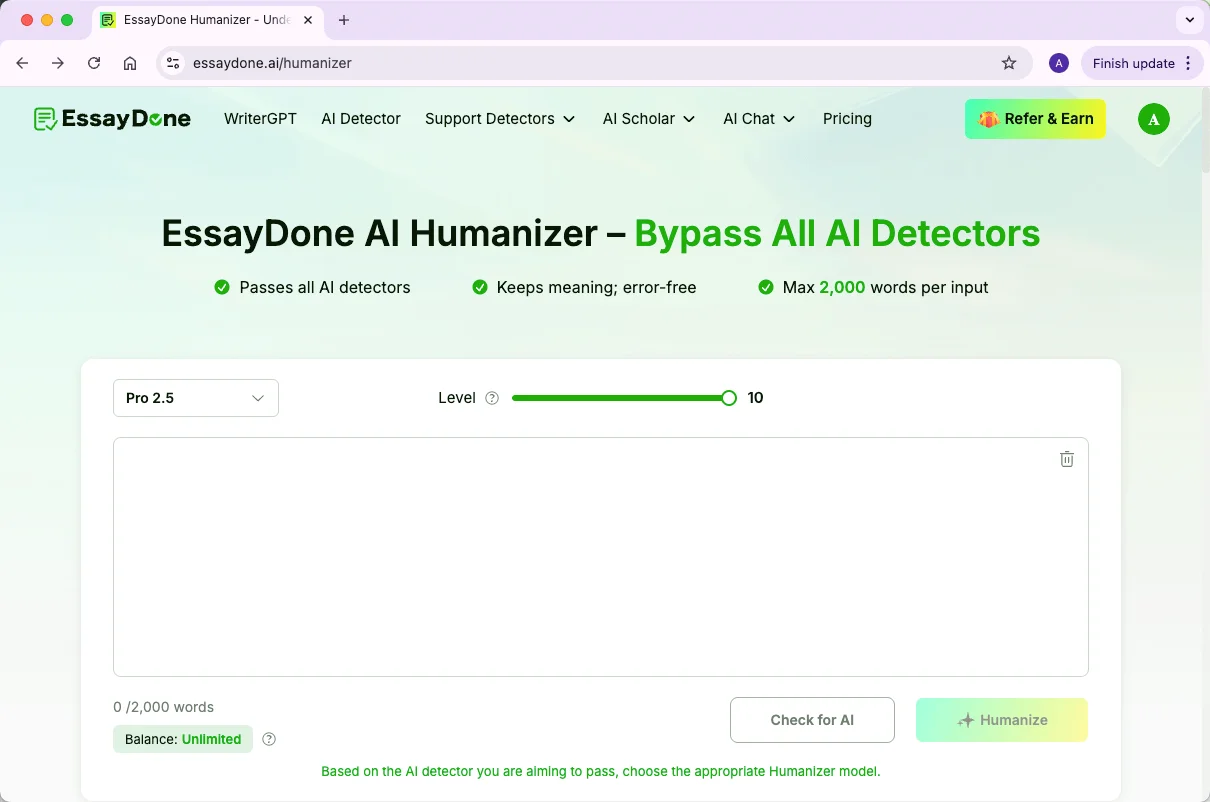
Why does this matter? AI detectors rely on signals such as perplexity (predictability of words) and burstiness (variation in sentence length). AI tends to write with a flat, consistent style, while humans naturally mix tone, pacing, and structure. By restoring these human-like patterns, tools like EssayDone can reduce the signals that detectors rely on.
In fact, when we took the fully AI-generated text from Test 1, ran it through EssayDone, and re-checked it with QuillBot’s detector, the result dropped to 0% AI-generated. 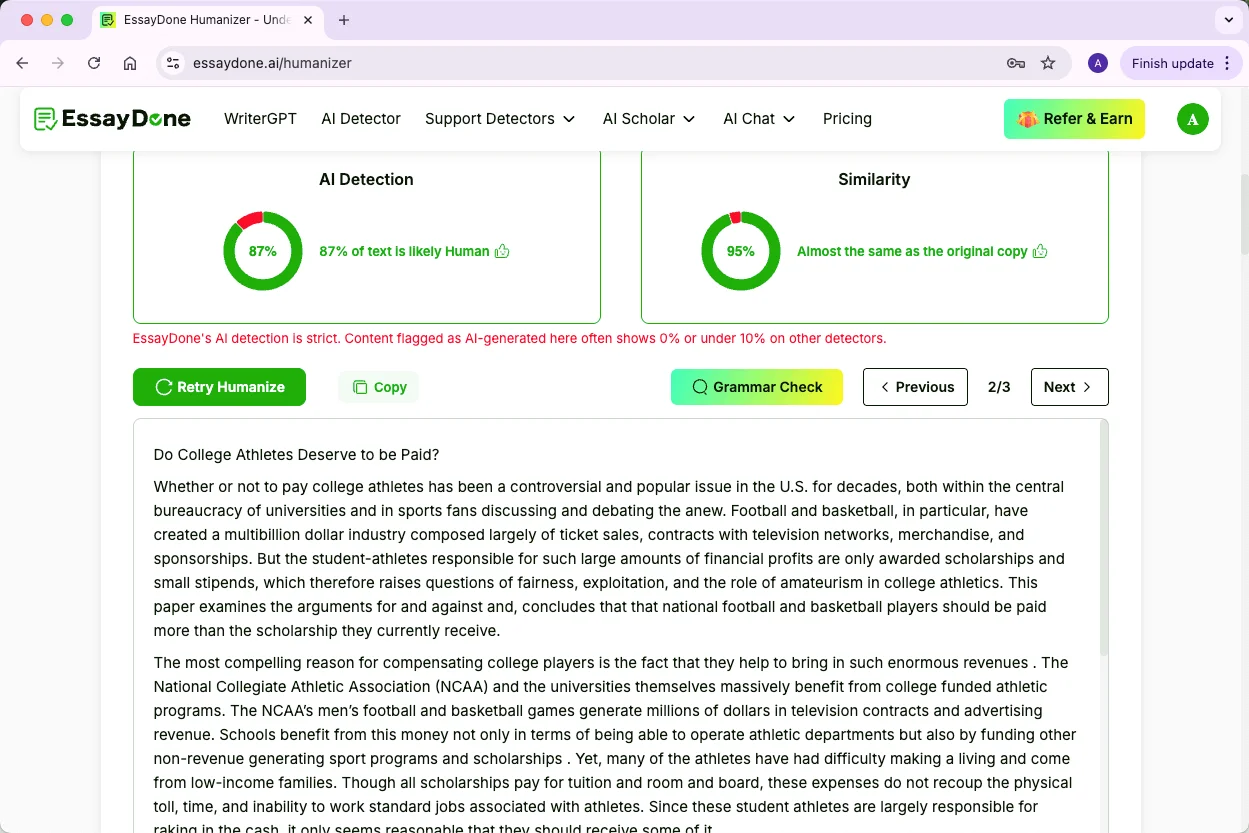
This shows that with professional-grade rewriting, bypassing is indeed possible.

5 Alternatives to GPTZero
As AI writing tools become more common, many users are looking for alternatives to GPTZero for detecting AI-generated text. Here’s a quick look at some of the top options and what sets them apart:
1. GPTZero
Fast and supports sentence-level analysis, making it detailed for pinpointing AI-generated parts. However, the free trial is limited, and it primarily supports English text.
2. Originality.ai
A strict and professional AI detection tool that analyzes text at the sentence level. It offers a free 750-word quota, and any additional usage requires a paid plan.
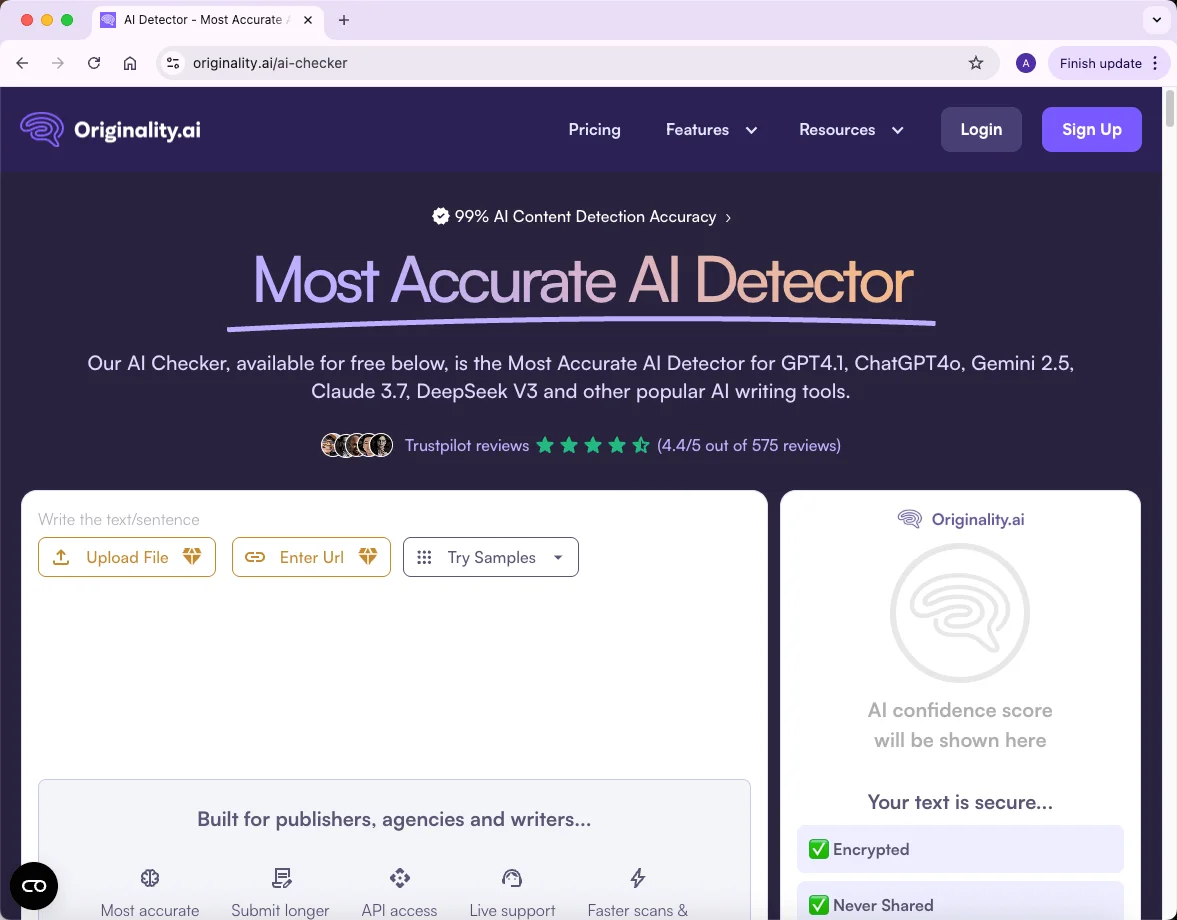
3. ZeroGPT
Free and easy to use, highlighting AI parts in yellow without providing detailed sentence-level analysis. No login is required, but results are less granular.
4. Winston AI
Preferred for checking content generated by ChatGPT, Google Gemini, LLAMA, and other LLMs. Free with limited quota and supports multiple languages including English, French, Spanish, Portuguese, German, Dutch, Polish, Italian, Indonesian, and Simplified Chinese.
5. Writer
Free, no login needed, and provides sentence-level detection. Easy to use, though accuracy may sometimes lag behind more specialized tools.
6. Copyleaks
Free and user-friendly, requiring signup. While convenient, it does not offer sentence-level analysis.

FAQ
Is QuillBot 100% accurate?
No AI detector is perfect. QuillBot can give a probability of whether text is AI-generated, but results may vary depending on text length, style, and AI sophistication.
How to bypass the QuillBot AI detector?
Simple word swaps or minor paraphrasing rarely work. Professional humanization tools like EssayDone can restructure sentence flow and style to reduce detection, but bypassing isn’t guaranteed.
Will my professor use AI detectors?
It depends on the school or instructor. Some use tools like Turnitin or QuillBot to check submissions, while others rely on traditional grading methods.
Can I use AI detectors on my own work before submission?
Yes. Using AI detectors on your drafts can help you understand potential issues with AI-like patterns and refine your writing before submission.
Are AI detectors legal?
Yes. AI detectors are legal to use, but misuse—like trying to bypass plagiarism detection or misrepresent authorship—can have academic or professional consequences.
Conclusion
We’ve reviewed QuillBot’s AI detector, from its detection methods, test results, accuracy, pros and cons, to pricing and alternatives.
While it can flag AI-generated text, results aren’t perfect, and simple edits usually won’t bypass detection. For writers and students, the tool can be helpful, but understanding its limits is key. Always combine it with careful human review to make the most of your work.
